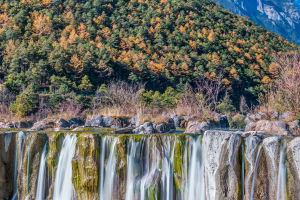The main function of a bridge is to connect two places so that people and goods can cross obstacles such as water bodies, ravines, and roads, thereby facilitating transportation and travel. Bridges can also improve traffic flow, shorten distances, and increase transportation efficiency and economic development.
Specifically, the role of the bridge includes:
Transportation: Bridges can provide passages for vehicles, trains, bicycles, and pedestrians, so that people and goods can easily cross obstacles such as waterways, canyons, and mountains, and realize the connection and intercommunication between regions.
Economic development: Bridges can improve transportation efficiency and economic benefits, and promote trade, tourism, and labor market development. At the same time, bridge construction can also stimulate economic growth and drive the development of related industries, such as steel, building materials, and other industries.
Social culture: Bridges are also landmarks of cities and can become important attractions for urban culture and tourism. Bridges can also facilitate connections between cities and the countryside, enhancing cohesion and interaction between communities.
Bridges usually consist of the following parts:
Supporting structure: The supporting structure of a bridge usually includes piers, abutments, and cantilever piers. They support and distribute the load of the bridge.
Bridge deck: The bridge deck is the traffic road on the bridge, which is usually made of materials such as reinforced concrete or asphalt.
Bridge Deck Pavement: A bridge deck pavement is the surface layer of a bridge deck, usually composed of asphalt or concrete. It can provide water resistance and durability, and provide a comfortable driving surface for vehicles.
Roadway markings: Roadway markings are markings on bridge decks that indicate the direction of travel and safe areas for vehicles.
End guardrail: The end guardrail is a structure that protects both ends of the bridge. It can prevent vehicles from falling from the bridge and protect the safety of pedestrians and vehicles.
What do you know about world-famous bridges?
Golden Gate Bridge: Located in San Francisco, USA, it is a suspension bridge with a length of 2737 meters. It was completed in 1937 and is known as one of the seven engineering wonders of the world.
Hong Kong-Zhuhai-Macau Bridge (Hong Kong-Zhuhai-Macau Bridge): Located between Hong Kong, Zhuhai, and Macau, China, it is a 55-kilometer cross-sea bridge, of which 6.7 kilometers are subsea tunnels. It is considered to be the longest cross-sea bridge in the world.
Yangtze River Bridge: Located in Wuhan City, China, it is a suspension bridge with a total length of 1.6 kilometers. It is the first large-scale road and railway double-layer composite suspension bridge in China.
Akashi Kaikyo Bridge: Located in Kobe, Japan, it is a suspension bridge spanning the Seto Inland Sea with a total length of 3,911 meters. It is the longest suspension bridge in the world.
Bosphorus Bridge in Istanbul: Located in Istanbul, it is a suspension bridge with a total length of 1560 meters and is an important transportation hub between Europe and Asia.
These bridges have an important position and influence in the field of bridge engineering and have played an important role in promoting the development of the local economy and society.


